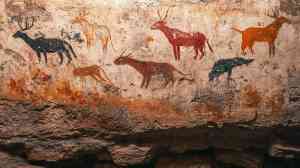What Tree Rings Can Tell Us About Past Climate Conditions

Tree rings provide a fascinating and valuable record of past climate conditions. By examining the patterns and characteristics of these rings, scientists can uncover insights about historical weather events and long-term environmental changes.
Understanding Tree Rings and Their Formation
Trees grow by adding a new layer of wood each year, forming rings visible in cross-sections of their trunks. These annual rings vary in thickness depending on environmental factors such as temperature, rainfall, and soil conditions. A wider ring typically indicates favorable growth conditions like warm temperatures and abundant moisture, whereas narrower rings suggest harsher or drier periods.
How Tree Rings Reflect Historical Weather Patterns
Because tree growth is influenced by climatic variables, tree ring patterns serve as natural archives of past weather. Dendrochronologists study these patterns to infer periods of droughts, wet spells, cold snaps, or warm phases that occurred over centuries or even millennia. This information helps reconstruct climate histories in regions where written records are scarce or nonexistent.
Techniques Used to Analyze Tree Rings for Climate Data
Scientists extract core samples from living trees or study preserved wood from old logs and archaeological sites to analyze tree rings without damaging the trees. Using precise measurements and dating techniques such as radiocarbon dating alongside dendrochronology allows researchers to build accurate timelines correlating ring features with known climatic events.
Applications of Tree Ring Studies in Climate Science
Insights gained from tree ring analysis contribute significantly to understanding natural climate variability over long periods. These studies improve climate models by providing baseline data on how ecosystems responded to past temperature changes and precipitation patterns. They also aid in predicting future environmental impacts related to global warming.
Limitations and Considerations When Interpreting Tree Ring Data
While tree rings are invaluable for reconstructing past climates, it is important to consider factors such as species differences, local microclimates, and human influences that may affect growth independently of weather conditions. Combining tree ring data with other proxies like ice cores or sediment records enhances reliability and provides a more comprehensive view.
In summary, the study of tree rings offers an accessible window into Earth’s climatic history through natural recordings embedded within trees themselves. This knowledge not only enriches our understanding of how climate has changed but also supports efforts toward better managing our environment in the face of ongoing change.
This text was generated using a large language model, and select text has been reviewed and moderated for purposes such as readability.











